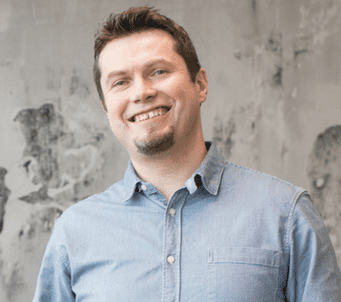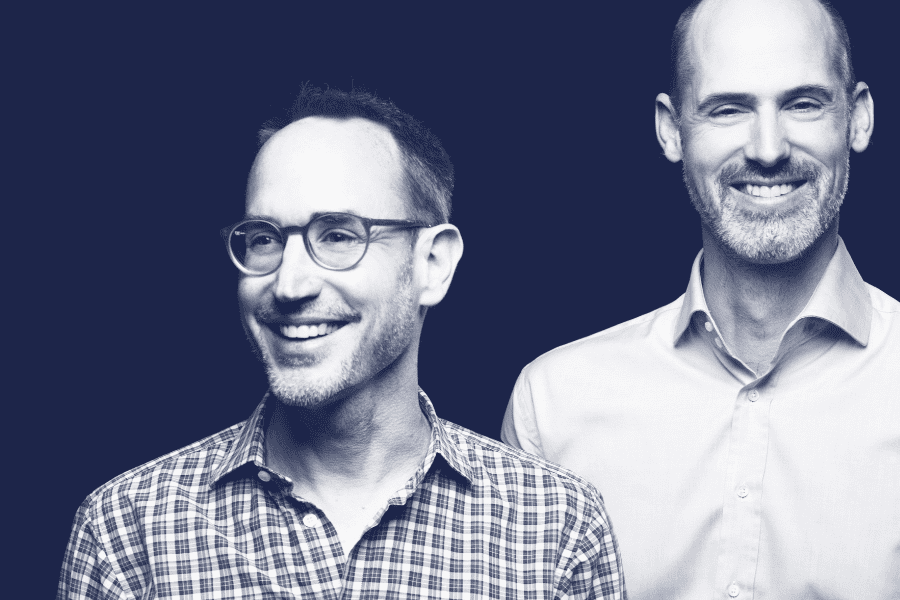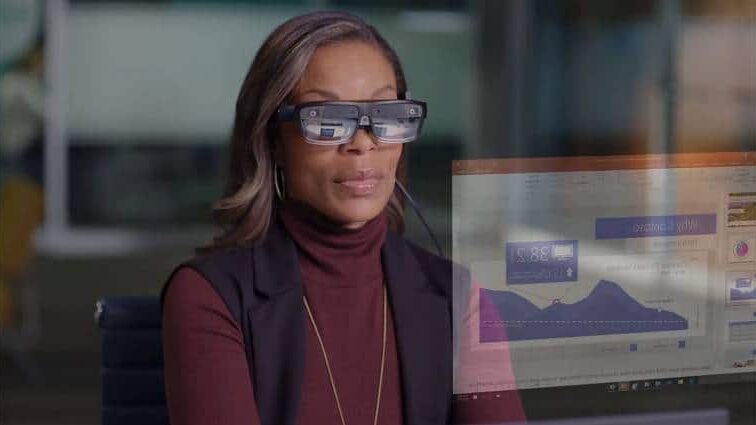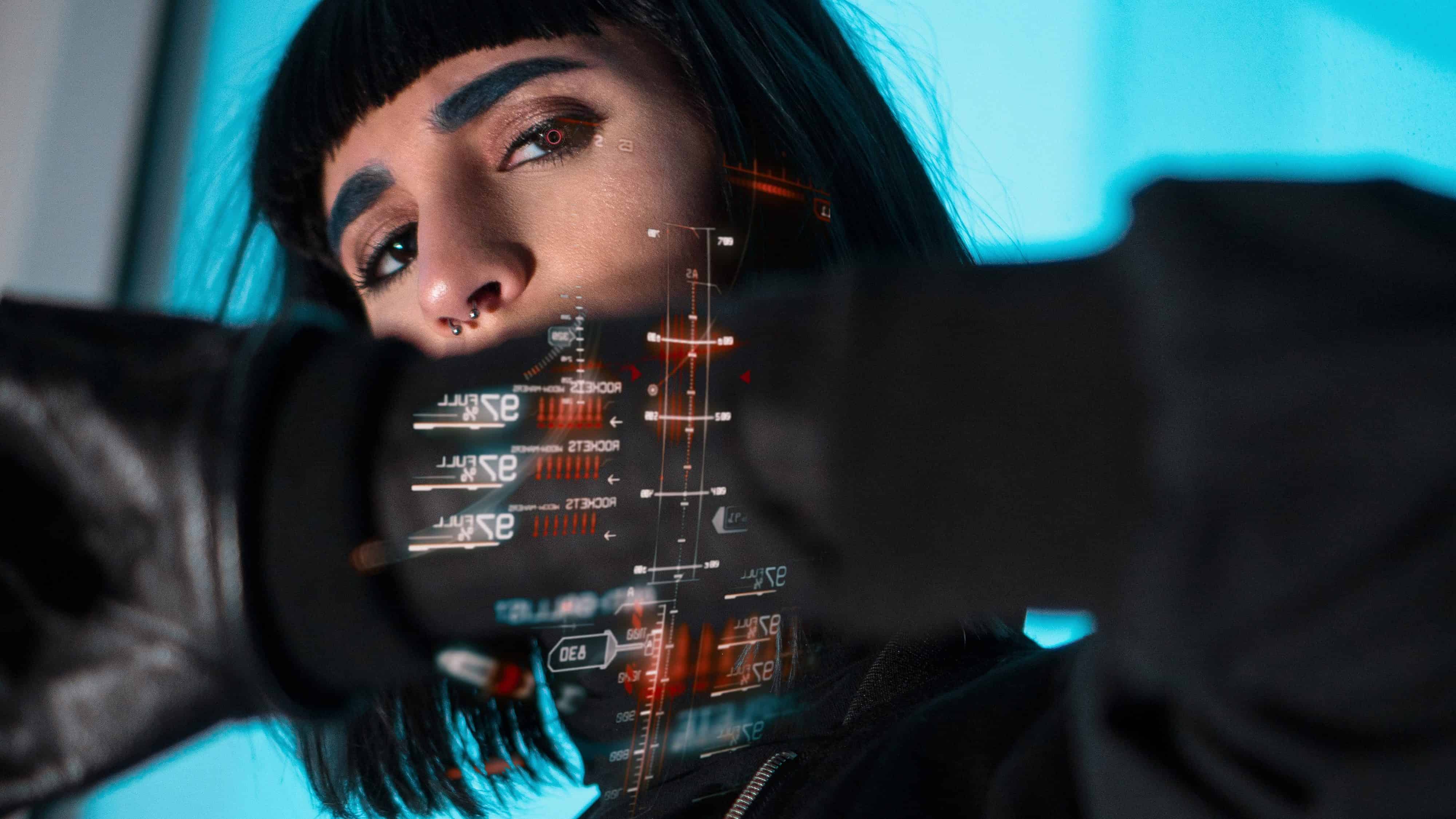Pure curiosity led Tomas Sluka to develop a new display technology. The market of AR glasses might become huge, but is still a distant promise. In this interview, CREAL’s co-founder explains how the startup wants to survive until then.

CEO and Co-founder, CREAL
Tomas Sluka co-founded CREAL in 2017 together with Alexander Kvasov. CREAL develops near-eye light-field displays which will replace the flat screens in today’s Virtual and Augmented Reality glasses. CREAL has raised more than USD 15m so far. Previously, Tomas was a researcher at EPFL and CERN.
When did you first think about creating a new type of display for augmented reality (AR) and virtual reality (VR)?
VR headsets made big headlines in 2014 when Facebook bought Oculus for about USD 2 billion. It was the first strong indicator that displays presenting digital information as 3D objects around us will inevitably become the next platform after the PC and the smart phone. I was convinced about it already, but this acquisition showed that the right time is probably coming. I tried out number of VR headsets but it was a very unpleasant experience. The way information is displayed with current technology leads to the so-called vergence-accommodation conflict, which manifests itself as dizziness and headache you get after a short while of using VR. It’s not just me, majority of people experience the same problem sooner or later. Out of curiosity, I wanted to find out who is going to solve the problem and how, but, to my disappointment, I found no good solution. How is this possible, I thought. There needs to be a way to display information more naturaly than just on one fixed plane, one that allows the eyes to wander, change focus and perceive the full depth of objects in space. The benefits were obvious. Hence, I bought some equipment and started exploring possible solutions. After a few months, after a full night spent on focusing on the problem, I came up with an idea that looked promising. That was when CREAL’s light-field projector was born. It enables natural eye focus on different objects and eliminates VR nausea. Since there wasn’t anyone else exploring the same approach, I built a prototype. And it worked even better than I was hoping for.
Inventing technology is one thing, but what led you to found a company?
Lausanne is not only home to EPFL but also to a very lively startup community and especially also VR and AR experts. After having submitted a patent application I started to show my invention to professors and experts from industry such as to Intel AR team, and I got assured that it was a unique tech with a huge potential. I always had a passion for science, but with the very broad range of projects I have worked on in the past, I have become unsuitable for Academia, which requires narrow specialization, and there was no other way how I could continue developing my idea than to do it independently. Hence, to make a startup. What I lacked in business knowledge I learned from Venture Lab, which helps people get startups off the ground, and then from books and on the go. Our first workshop wasn’t in a garage, it was in a spare room in our apartment which today is my son’s bedroom.
Since Facebook rebranded to Meta, everyone is talking about the metaverse. What can we expect?
There still is no clear consensus on what “metaverse” actually means. Is Mark Zuckerberg’s avatar what the metaverse will look like? VR offers an escape from reality, but will we really spend most of our lives in a Matrix-like alternative reality? I doubt it. Hardware improves all the time, but today’s hardware is based on a fundamentally flawed principle. The displays in use today don’t offer focal depth. Incremental improvements won’t solve this underlying problem. CREAL’s technology removes the unhealthy eye-strain these systems cause. Coming back to your question about the metaverse, I think that augmented reality will provide a much more natural experience than VR. VR might replace reality with a potentially addictive phantasy, but AR enhances your surroundings, the real world, with the information you need. AR provides an additional personalized digital layer of contextual information in a hands-free way.
I remember when we first met 3 years ago and your prototype still was the size of a shoebox, when Verve Ventures invested in CREAL for the first time. You’ve achieved impressive results in shrinking your hardware since then.
Making the system smaller and lighter is a very obvious and important part of our work, but not the only challenge. We’re also working on computational efficiency. You cannot carry a computer farm around to power a set of AR glasses (laughs). The hard part about miniaturization is that we need to develop and customize every single component ourselves. What our small team has managed to do so far is really insane. It makes me feel very lucky. Many have told us in the past that what we plan to do is impossible, but we did it. Nonetheless, we have always been careful about what we promise.

Invest in Startups
As one of Europe’s most active venture capital investors, we grant qualified private investors access to top-tier European startups. With investments starting at EUR/CHF 10’000, you can build your own tailored portfolio over time and diversify across stages and sectors.
CREAL will not attempt to build a consumer device and sell it. That is something only large tech firms can do. So what will CREAL eventually sell?
There is no reasonable way we’ll go directly to the consumer. AR/VR hardware is incredibly capital intensive. Magic Leap has spent more than USD 4 billion on their product without achieving a breakthrough yet. As a startup, we need to navigate smartly. Unlike giant tech firms, we don’t have to make billions of revenue next year; we continue working on our moonshot while we are entering smaller markets, too, where we can monetize our technology sooner.
What is the moonshot or long-term goal?
The big technology companies all have decided to enter the AR field, but they haven’t decided on specific components yet. Our goal is to provide them with a complete technology package for their augmented reality glasses through licensing agreements or M&A. The AR market will undoubtedly become very large one day, and since we can provide an advantage others cannot, we’ll get a share of that market. But the day you’ll be able to buy the first full scale AR glasses is still far away. It might take another 5 years, it’s really difficult to predict. For a startup like CREAL this is a pretty long time and not something we can afford to wait for.
This is why CREAL is also working on other applications of its technology that allow you to monetize it faster.
Yes. The first application is vision care. We added specialists to our team, including an optometrist and senior executive from vision care market and we’re already speaking to all the manufacturers of devices in this space. We have sold several evaluation kits already, so this business should take off soon. Vision care is a big market sized at around USD 5 billion. The way eyesight is tested at the optometrist basically hasn’t changed in 150 years. It’s ripe for innovation disruption. We can provide a device for eye tests that uses digital technology and will replace a much larger and more expensive device and also the vision care specialist. The procedures can be easily automated. For us, the advantage is that the device doesn’t need to be super small or cheep and doesn’t require a rich content ecosystem. We just apply what we do anyway to a new field. Our headsets allow correcting the vision of a person. We had one person with an extreme -10 diopters using our headset without problems, we simply adjust the images digitally. Vision care is the inverse of this, if you want.
“What CREAL sells, ultimately, is know-how.”
Are there other applications for your technology that you’re exploring?
What CREAL sells, ultimately, is know-how. Various applications are imaginable, some of which I didn’t imagine, such as in-shop customer experience or AR navigation in orthopedic surgeries. We’re getting contacted by various companies that need better VR and AR than you can find on the market today. What we’re looking for is working with partners who are able to integrate our display tech in their products and applications and who allow us to monetize our intellectual property fast and preferably, upfront.
If you’re exploring new collaborations, you probably also need to broaden your team. CREAL used a part of the proceeds of the last financing round to hire more talent just at the same time as Magic Leap was slashing jobs.
When I started CREAL, I didn’t know that there was already a lot of AR activity around Lausanne. We were twice lucky in the past to be hiring at times when truly great talent was available, when Intel and Magic Leap cut jobs here in the region. It’s difficult to overestimate the impact this has on a startup when you can strengthen your team with veterans of the most advanced projects in the industry. Hiring still is my main focus as CEO now. I know which people we need, we just need to be able to attract them. To profit from the business opportunities we have identified, we need to hire business people with sales and marketing backgrounds. This ambition to grow the team to capitalize on the business opportunities is also why we’re raising a new financing round soon.
“Investors want to bet on AR/VR opportunities.”
How difficult is it to find investors interested in hardware startups?
CREAL is a different company than it was 4 years ago. I remember my first pitches back then. Many investors didn’t believe in the basic vision of AR. This has changed. The perception of the market is different. Investors want to bet on AR/VR opportunities, the conviction that it will be the next platform after the smartphone is there. For CREAL more specifically we can show the progress we’ve made in these years and that we kept our promises. Our technological development follows a predictable plan. The technological risk has been minimized. We have assembled a world-class team. Our light-field demonstrations have received the highest praise from industry experts. We’re on plan with our moonshot project and will unveil our new AR glasses prototype soon. And as I explained, we can monetize our technology until we get a “CREAL inside”-type of deal with a big tech company. We already have received offers for such collaboration, but it was too constraining and “too cheap” at that time. We want to get as far as possible with many opened doors and increase the value of the company in the long term.
Written by
WITH US, YOU CANCO-INVEST IN DEEP TECH STARTUPS

Verve's investor network
With annual investments of EUR 60-70 mio, we belong to the top 10% most active startup investors in Europe. We therefore get you into competitive financing rounds alongside other world-class venture capital funds.
We empower you to build your individual portfolio.
More News
16.11.2021
How enterprises use augmented reality today
Augmented reality glasses have found their industrial applications and help workers perform complex tasks and collaborate with others. In this interview, AR expert Leon Laroue explains what the market drivers are and why Lenovo has chosen to work with Swiss startup Holo One as an independent software provider.
02.09.2019
Star Wars-style 3D-projections are coming to your living room
Prof. Touradj Ebrahimi is a world-renowned expert in the field of multimedia. In our interview, he talks about light field technology, which promises to change radically how content will be produced and watched in the future.
Startups,Innovation andVenture Capital
Sign up to receive our weekly newsletter and learn about investing in technologies that are changing the world.



